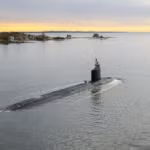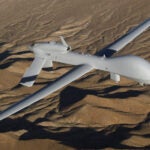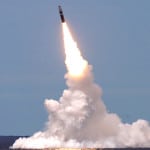
NASA Lunar CATALYST. NASA seeks proposals from the private sector to partner in the development of reliable and cost-effective commercial robotic lunar lander capabilities that will enable the delivery of payloads to the lunar surface, according to an agency statement. NASA’s new Lunar Cargo Transportation and Landing by Soft Touchdown (CATALYST) initiative calls for proposals that would lead to one or more no-funds-exchanged Space Act Agreements (SAA). NASA’s contribution to a partnership would be on an unfunded basis and could include the technical expertise of NASA staff, access to NASA test center facilities, equipment loans or software for lander development and testing. Industry proposals are due March 17, according to a sources sought notice posted on Federal Business Opportunities (FBO).
Launch Liability Extension. The fiscal year 2014 omnibus spending bill, passed by the House and Senate and bound for President Barack Obama’s desk, includes an extension of the commercial space launch indemnification regime first introduced in 1984. The “Launch Liability Extension” provision requires launch service providers to acquire private launch insurance against the possibility of certain third-party damages in the event of a launch failure involving government or commercial satellites, according to the Satellite Industry Association (SIA), which lauded the extension. The provision, which will run until the end of 2016 if the bill becomes law, also offers government indemnification for any such damages in excess of the required private launch insurance limits. Though it has never been drawn upon, SIA says it likes the extension because it enables U.S. commercial launch providers to compete effectively with foreign providers, all of which SIA says have been provided with unlimited indemnification coverage.
KC-46A. Boeing is assembling the fourth and final KC-46A next-generation aerial refueling tanker test aircraft for the Air Force at the company’s Everett, Wash., factory, according to a company statement. Boeing says this keeps program on track to deliver the initial 18 aircraft to the Air Force by 2017. The first flight of an engineering and manufacturing development (EMD) KC-46 tanker program test aircraft, without its aerial refueling systems, will take place at mid-year, followed by the first flight of a KC-46A tanker in early 2015. First delivery of a production aircraft to the Air Force is planned for early 2016. Boeing expects to build 179 tankers by 2027 if all options under the contract are exercised.
Nuke Cheating. The Air Force implicates 34 ICBM launch officers at Malmstrom AFB, Mont., in cheating on ICBM launch officer proficiency tests. The revelations emerge during an investigation into alleged illegal drug possession, according to Air Force Secretary Deborah James. The officers range from second lieutenants to captains and the alleged cheating occurred in the August and September timeframe. Air Force Office of Special Investigation officials were examining allegations of illegal drug possession when evidence surfaced that a missile launch officer at the 341st Missile Wing electronically shared the answers to monthly missile launch officer proficiency tests with 16 other officers. Air Force officials subsequently approached the entire missile crew at Malmstrom and 17 other officers admitted to at least being aware of material that had been shared, according to the Air Force.
US-Canada Space Data. U.S. Strategic Command (STRATCOM) signs a new space situational awareness (SSA) data sharing agreement with Canada’s Department of National Defence, according to a STRATCOM statement. The agreement permits an advanced exchange of SSA data. Canada joins Japan, Australia and Italy by participating in these sharing agreements directed at promoting safety of space flight. The agreement enhances multinational space cooperation by streamlining the process for the Canadian Joint Operations Command (CJOC)/Space Operations Cell, on behalf of Canada’s defence department, to request specific information gathered by STRATCOM’s Joint Space Operations Center at Vandenberg AFB, Calif.
NG MAGIC. The Air Force Research Laboratory (AFRL) issues Northrop Grumman a phase three navigation system-related contract to continue improving geo-registration accuracy for positioning and pointing applications, even in GPS-denied conditions, according to a Northrop Grumman statement. In the first two phases of the Maintain Accurate Geo-registration via Image-nav Compensation (MAGIC) program, Northrop Grumman integrated geo-registration algorithms in a vision-aided inertial navigation system. Having successfully demonstrated a prototype system in phase one and prepared for flight tests in phase two, the company will continue to develop capabilities for incorporating 3D maps, improving performance and quantifying uncertainties associated with image-based navigation in phase three, as well as conduct additional flight tests to prove real-time performance in realistic environments. The MAGIC program’s objective is to develop and demonstrate advanced real-time geo-registration and navigation algorithms using a combination of cameras, an inertial measurement unit and any available GPS information.
NSTIC Pilot Opportunities. The National Institute of Standards and Technology is kicking off its third round of pilot projects under the National Strategy on Trusted Identities in Cyberspace, a public-private partnership to help spur innovation to make online transactions more secure, private and convenient. The FY ’14 awards for the pilot projects are not expected to exceed $6 million. In 2012 and 2013 NIST awarded a combined $18 million for 12 pilot projects. NIST will host an Applicants’ Conference on Jan. 31 to discuss the new funding opportunity. Applications are due by May 13 with awards expected in September.
Nominee Praises CBP Air and Marine. Gil Kerlikowske, the Obama administration’s nominee to be the next commissioner of Customs and Border Protection (CBP), tells a Senate panel that investments in the agency’s Air and Marine capabilities must continue. Kerlikowske, who is currently director of the White House Office of National Drug Control Policy, tells the Senate Finance Committee at his confirmation hearing that in his current job “I have personally observed the significant contributions of CBP’s Air and Marine operations in the nation’s counterdrug mission, along the borders and in the transit zone.” He also says that investments in Air and Marine operations are needed to “bolster anti-terrorism and law enforcement missions” performed by the agency and its investigative partners.
NSC For Alaska? The FY ’14 Omnibus Appropriations bill directs the Coast Guard to report to Congress on the costs of homeporting a National Security Cutter (NSC) in Alaska. Current plans call for the Coast Guard to build eight NSCs. So far, three of the vessels have been delivered and are homeported in Alameda, Calif. The next two ships are slated to operate from Charleston, S.C. The bill also calls for the Coast Guard to report on an Arctic implementation plan as well. In support of Arctic operations, the Coast Guard has operated one of its NSCs out of Alaska previously on a temporary basis as a floating base given the ships’ long endurance, advanced C4ISR suite and ability to launch and recover helicopters and small boats that further extend its range.
Acquisition Makes A Difference. Maj. Gen. William “Tim” Crosby retires Friday as PEO Aviation, and says he moved into a career in acquisition because he felt he could make a difference in the branch. “Commanding troops is more fun,” he says at the Association of the United States Army Aviation Symposium. “Acquisition is gut wrenching, frustrating business, getting things done quite often in spite of the process not because of it.” For example, some ideas come from the bottom up. Leaders didn’t see the benefits of a modernized digital cockpit, but young soldiers used to digital games in mall arcades picked it up in a snap. Now all aircraft have the same situational awareness via digital cockpits, he says. Similarly pushing UAV feeds into a cockpit will bring reconnaissance, surveillance, intelligence and target acquisition to air crews will help them know if they’re approaching a hot landing zone, or a peaceful one so they are more prepared. “Acquisition can make a difference,” he says.
Budget Balance Tough. Army aviation comprises some 25 percent of the service budget and fiscal challenges will have an impact over the coming years, says the Army G-8 at the Association of the United States Army Aviation Symposium. Lt. Gen. James Barclay says it’s going to take an innovative approach to solve issues and problems” that are going to face the service over the next seven to eight years. “Bottom line: over the next five years in the program, the budget, the Army’s going to have a significant challenge in order to balance our end strength, modernization, and maintain readiness of the force.” Those are the three legs of the stool that his office and budget officers struggle with each day. “Aviation is part of that, and just another part of the challenges impacting the total Army,” he says. With changing fiscal guidance, Barclay says he has “about 17 (different) graphs of Army toplines.”
NATO Air. NATO leads an air-defense flying training event for pilots and ground support personnel, including fighter controllers, in Iceland from Feb. 3-21. The Iceland Air Meet 2014 (IAM2014) will bring together participants from NATO member nations Norway, Iceland and the Netherlands, and from partner countries Finland and Sweden, to conduct a wide range of air defense-related flying activities.It will take advantage of the deployment to Iceland of a Norwegian air-defense detachment on Jan. 27 to conduct the regular NATO peacetime preparedness. This mission is conducted by NATO Allies only and is separate and distinct from IAM2014. IAM2014 will be the first time that Finland and Sweden have deployed to Iceland, and it is expected it will improve deployability and interoperability, provide additional training opportunities and further strengthen Nordic defense cooperation between both NATO members and non-members. NATO will act as the overall coordinator for the event from its Combined Air Operations Center in Uedem, Germany.
New Research Consortium. Pentagon acquisition chief Frank Kendall says the Defense Department would announce the participants of two new “manufacturing innovation institutes” next month. One institute will deal with digital manufacturing–a concept that involves integrated, computer-based product and manufacturing process design. The second institute will focus on lightweight and modern metals, according to a White House press release. DoD already sponsors an additive manufacturing, or 3-D printing, consortium, and the Energy Department this week launched a power electronics consortium.
Coburn To Retire Early. Sen. Tom Coburn (R-Okla.) says he will retire at the end of this year, two years before his term ends. Coburn, the ranking member of the Senate Homeland Security and Governmental Affairs Committee, has advocated two-term limits on senators and had made clear many times he would not seek reelection in 2016. The news that he would leave at the end of this year comes just two months after he was diagnosed with prostate cancer, though Coburn says in an announcement that “his decision isn’t about my health, my prognosis or even my hopes and desires.” Rather, he said, “As a citizen, I am now convinced that I can best serve my own children and grandchildren by shifting my focus elsewhere.” Aside from his work on the homeland security committee, Coburn has made a name for himself in Congress with his annual Wastebook, outlining government projects–many of them defense-related–that total billions of dollars in what he considers unnecessary spending.
Fourth JHSV launched. The fourth of the Navy’s Joint High Speed Vessels, the future USNS Fall River, has been launched by builder Austal USA. Work will continue on the vessel to include final outfitting ahead of sea trials and delivery to the Navy later this year. The Fall River follows the USNS Spearhead (JHSV-1), which is deploying to Europe. The USNS Choctaw County (JHSV-2) was delivered to the Navy in June 2013, and the USNS Millinocket (JHSV-3) is scheduled to be delivered in the next month.
Second MLP Coming Along. The second of the Navy’s Mobile Landing Platform ships has completed builder’s trials. The future USNS John Glenn (MLP-2) underwent builder trials by General Dynamics NASSCO on Jan. 13 to demonstrate the performance of all of the ship’s major systems. The MLPs are designed to operate a sea-based platforms for launching ship and aircraft and lessening the Navy’s dependence on foreign ports or bases.
Undersea Technologies. The Navy has issued General Dynamics Electric Boat a contract modification for the development of advanced submarine technologies for current and future undersea platforms. The contract applies to technologies areas such as maintainability, survivability, hydrodynamics, acoustics and materials, as well as affordability, manning, hull integrity, performance, ship control, logistics, weapons handling and safety. The $29.8 million modification is part of a contract first issued in November 2010.

 By
By 











